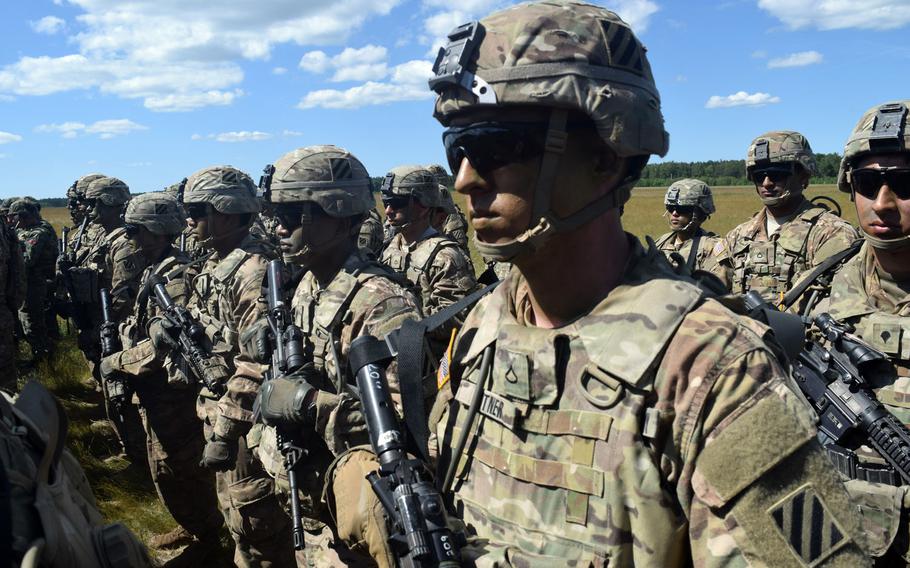
Soldiers from the 3rd Infantry Division stand in formation during opening ceremonies of an exercise at Drawsko Pomorskie Training Area, Poland in 2016.The U.S. armed forces were rated "marginal" in strength in an annual report by the conservative Heritage Foundation, despite America spending more on its military than the next 10 countries combined. ( Ryan Tatum/U.S. Army)
STUTTGART, Germany — The U.S. armed forces are only “marginal” in strength, a prominent conservative Washington think tank said in its annual report, even as America spends more on its military than the next 10 countries combined.
The Heritage Foundation’s annual index on global threats and U.S. military power, released Tuesday, found weaknesses in critical areas, especially for the Army and Navy.
“To me, the fundamental point here is that we are not where we should be,” said Rep. Mac Thornberry, the Republican minority leader of the House Armed Services Committee, during the rollout of the foundation’s military strength assessment.
The Heritage index rated the services on a five-point scale ranging from “very weak” to “very strong” in terms of their ability to fight two major regional conflicts simultaneously. The Army and Navy both got weak scores for capacity due to concerns about the size of their forces.
The Army, which has roughly 480,000 active duty soldiers, is moving too slowly toward its goal of 500,000 troops, which it won’t hit at its current rate until 2034, the report said. The service is well short of the 50 brigade combat teams that would be needed to fight simultaneous major conflicts, it said. The Army currently has 31 active and four reserve brigade combat teams.
“The slowdown in planned growth is being driven ... by a lack of funding, although recruiting has also emerged as a challenge,” the report said. “Most outside experts agree that the U.S. Army is too small.”
Although the Army scored only 70% in the area of capacity, it did better in terms of capability and readiness, scoring “marginal” and “very strong” respectively. The service's overall rating was marginal.
The Navy was rated marginal but trending toward weak. Like the Army, it lacks manpower, the Heritage report said. The index assessed that at least 400 battle force ships are required for the Navy to do what is expected of it. The current fleet stands at 300 ships.
The Navy is “much too small relative to its tasks,” the report said. “Depending on the Navy’s ability to fund more aggressive growth options and service life extensions as identified in the FY 2020 30-year shipbuilding plan, the Navy’s capacity score could fall further.”
In the areas of capability and readiness, the Navy scored marginal, trending toward weak.
The Air Force and Marine Corps both fared better in the index, registering marginal scores across the board. The overall lackluster ratings should not be viewed as reflective of the competence of individual service members or the professionalism of the services, Heritage said.
Instead, “they are assessments of the ... viability of America’s hard military power,” the report said.
The U.S. spent $732 billion on defense in 2019, with China coming in second at about $261 billion and India third at $71 billion, according to the Stockholm International Peace Research Institute. Heritage has long derided the spending comparison to other countries, arguing that U.S. global power projection, larger percentage spending increases by adversaries and the expense of preventing collateral damage require higher U.S. spending.
vandiver.john@stripes.com Twitter: @john_vandiver